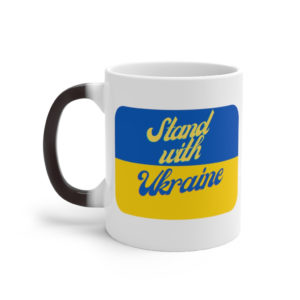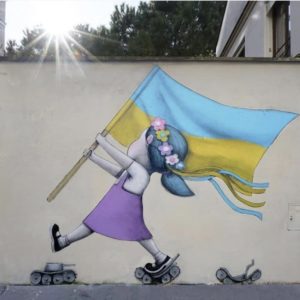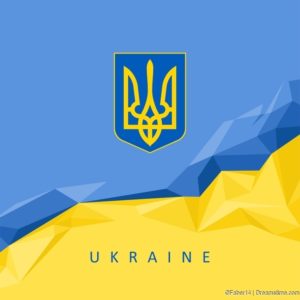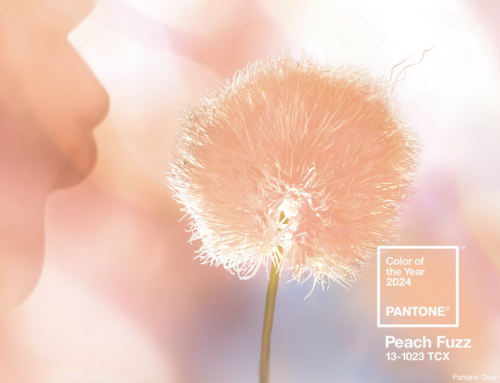The two hues that are mesmerizing the world right now are the colors of the Ukrainian flag. Pantone has labeled them “Freedom Blue” and “Energizing Yellow”, a resounding representation of the importance of freedom from oppression and the energetic determination of a country to defend itself from a foreign invader.
 Throughout the years, there have been various meanings ascribed to the Ukrainian colors, with some alluding to the colors that represented a rural landscape so indigenous to the region—the blue of the sky and the sea and the yellow for the weaving fields of wheat under sunny skies. Others say that the blue symbolizes the Dnieper River and the yellow represents the golden cupolas of the many churches in the country. Now the hues have also taken on the meaning of liberation and hope that is being heard internationally.
Throughout the years, there have been various meanings ascribed to the Ukrainian colors, with some alluding to the colors that represented a rural landscape so indigenous to the region—the blue of the sky and the sea and the yellow for the weaving fields of wheat under sunny skies. Others say that the blue symbolizes the Dnieper River and the yellow represents the golden cupolas of the many churches in the country. Now the hues have also taken on the meaning of liberation and hope that is being heard internationally.
The use of color as social/political symbols has a long history. For example, at the end of the 19th century, red was appropriated as the assertive color of the socialist movement and adapted in many countries supporting socialist causes.
Dedicated to obtaining the right to vote for women, in 1867 the American suffrage movement adopted three colors: purple for loyalty, white for purity, and yellow for hope. Women advocates often wore white, accessorized with purple and yellow, to distinguish themselves from the men who wielded the most power and most often wore black.
Green, the ubiquitous color of nature, was adopted by Australian environmentalists in the 1970s and resonates even more strongly today internationally as the emblem of the preservation of a healthy environment.
In 2004, Ukraine gained international attention when a civil protest movement forced the cancellation of an election believed to have been manipulated by fraud. During massive demonstrations, orange was worn while banners and posters proliferated in the same hue. Orange was chosen as it stood for energy and differentiated from the aggressive red associated with the Soviet communists.
Protests against the Hong Kong government, in 2019, were marked by thousands of people as they took to the streets wearing black, the color chosen for its association with grief, to symbolize the loss of autonomy and promised liberties to the people that live in Hong Kong.
And who can forget the global resonance of the hot pink “pussy hats” that were worn in the women’s march on Washington in January of 2017? The vibrant shade, first adapted in India by the Gulabi Gang who struggle to end female oppression in that country, hot pink became emblematic of the support for women’s rights. More closely related to the “mother color” of red, this powerful pink became a symbol of resistance, while still displaying its inherent womanhood.
There is no underestimating the impact of color to galvanize a movement. We are seeing so many iterations of “Freedom Yellow” and “Energizing Blue” across the landscape as a testament to the power and wonder of color.
Here are but a few examples that I thought were noteworthy. Do you have any images to share?













Leave A Comment